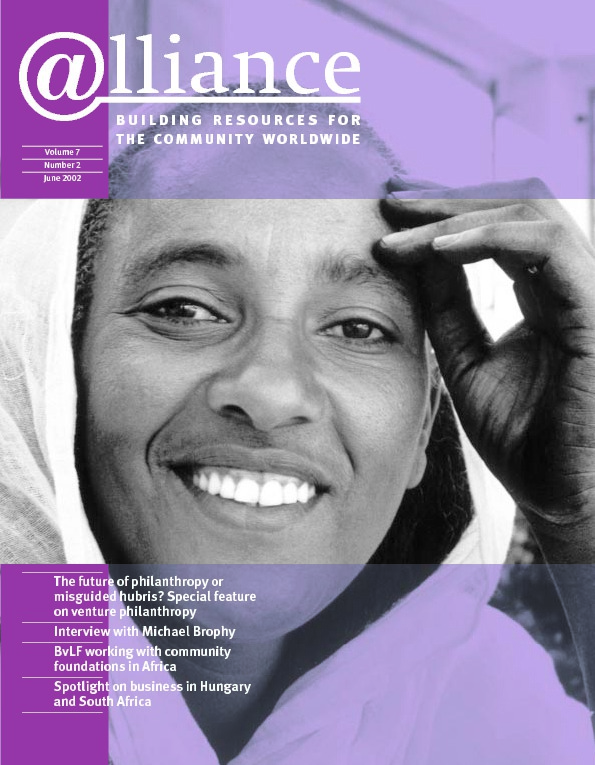CAF’s new Risk Investment Fund (RIF) aims to create a new model for financing voluntary and social enterprise in the UK. CAF will invest £1 million in the Fund, plus £250,000 per year for a top-up reserve and management costs. The target is to build a capital fund of £5 million within three years, growing to £50 million over ten years, with additional investment coming from personal charitable trusts, foundations and corporates.
RIF will provide development and project funding to UK organizations with charitable purposes. The range of investment will be up to £100,000, with the larger investments in development capital rather than start-ups. It will also consider providing support for the expansion of commercial subsidiaries of charities related to the mission of those charities. For example, CAF might provide £50,000 as a ‘recoverable grant’ to help a charity develop a fee-earning consultancy service closely linked to its mission. If the business develops as planned, CAF will recover its funds. If not, not.
RIF thus aims to plug a gap between income from grants/fundraising and loans from banks and community financial intermediaries. (In the commercial sector, the gap would be filled by venture capital.) Where the risk to a lender is too great, and grant money is not available, RIF may be able to assist in providing finance. To over-simplify, if RIF provides support and the project or charity is successful, RIF is a lender and the money is returned for recycling. If the project is not successful, RIF can convert part or all its support into a grant.
A top-up reserve, to be funded by CAF and others, will offset any losses/grants, so that the capital fund is maintained and can be recycled as often as possible. Interest, fees and capital profits earned will be ploughed back into the reserve.
Debt, underwriting, guarantees, ‘recoverable grants’ and equity will be used as investment instruments. Recycling of funds will maximize the use of charitable monies.
Managing risk
RIF will manage its investment risk in various ways:
- co-investment, wherever possible, alongside Investors in Society and other social lenders or charitable grantmaking foundations;
- regular review of investment instruments (loan, redeemable grant, etc) and the stage of development of investees (start-up, development capital, etc);
- use of monitoring mechanisms to provide early warning of difficulties;
- investing no more than 10 per cent of the fund in any one enterprise.
Market development and advocacy
CAF’s intention is to play a catalytic role in creating a new investment market for voluntary and social enterprise, bringing together old and new supplies of funding with entrepreneurial, developing charities. It therefore hopes to use the Risk Fund to demonstrate successful, good practice to charities, foundations, other donors and government.
For more information, contact John Kingston, Director, CAF Risk Investment Fund at jkingston@CAFonline.org






Comments (0)